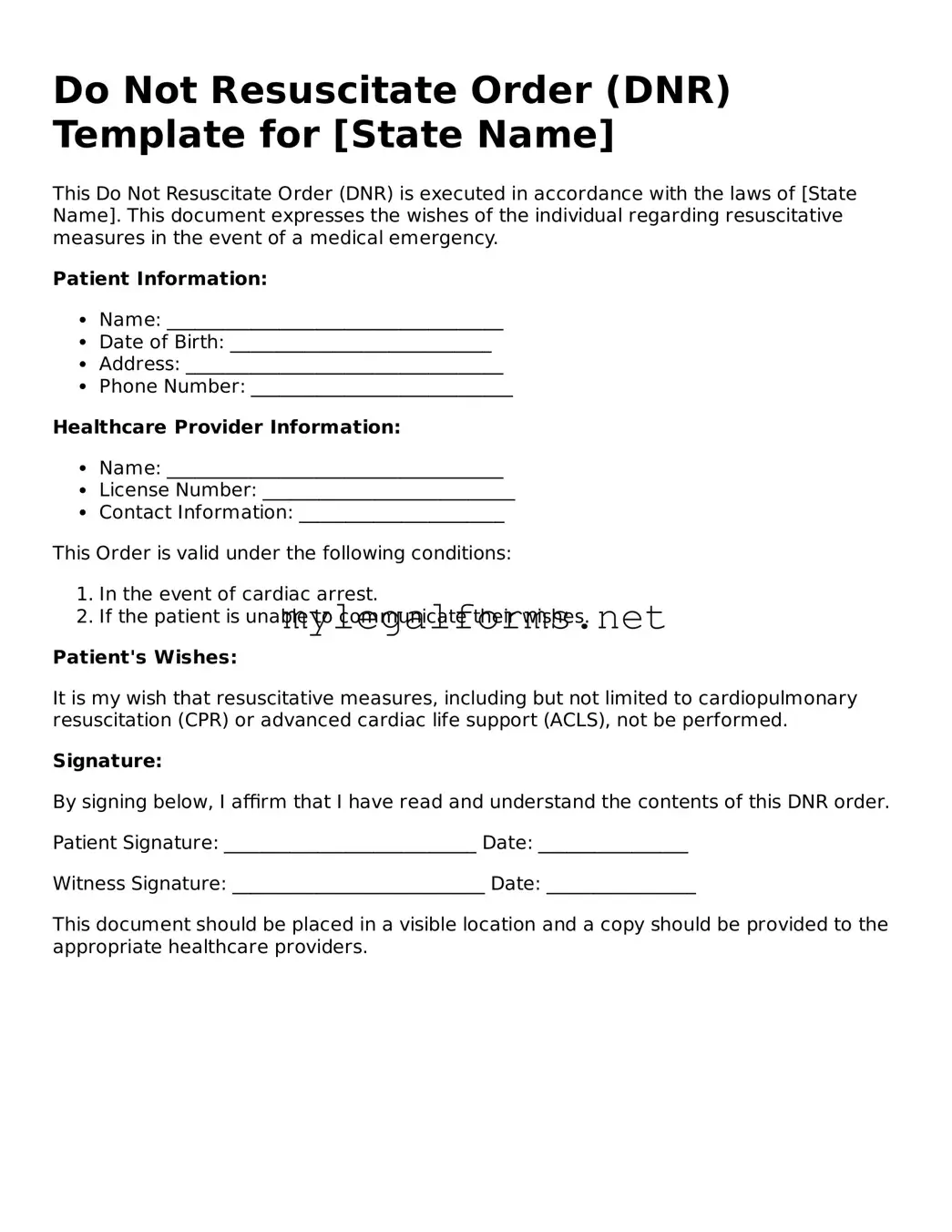Do Not Resuscitate Order (DNR) Template for [State Name]
This Do Not Resuscitate Order (DNR) is executed in accordance with the laws of [State Name]. This document expresses the wishes of the individual regarding resuscitative measures in the event of a medical emergency.
Patient Information:
- Name: ____________________________________
- Date of Birth: ____________________________
- Address: __________________________________
- Phone Number: ____________________________
Healthcare Provider Information:
- Name: ____________________________________
- License Number: ___________________________
- Contact Information: ______________________
This Order is valid under the following conditions:
- In the event of cardiac arrest.
- If the patient is unable to communicate their wishes.
Patient's Wishes:
It is my wish that resuscitative measures, including but not limited to cardiopulmonary resuscitation (CPR) or advanced cardiac life support (ACLS), not be performed.
Signature:
By signing below, I affirm that I have read and understand the contents of this DNR order.
Patient Signature: ___________________________ Date: ________________
Witness Signature: ___________________________ Date: ________________
This document should be placed in a visible location and a copy should be provided to the appropriate healthcare providers.
